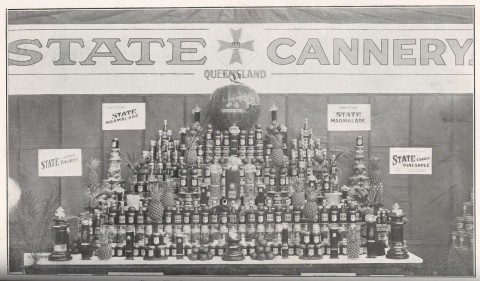Teneriffe is an inner-city suburb, 2.5 km north-east of central Brisbane. Defined as a separate suburb until 1975, Teneriffe was confined to a locality within the suburb of Newstead until 2010 when it reverted to suburb status. Teneriffe has generally been situated south of Commercial Road and between Chester Street and the Brisbane River. Its southern limit has been variously Kingsholme/Macquarie Streets or Beeston Street.
Teneriffe Park (44m) is the locality's most prominent hill, from which numerous minor streams ran down into Newstead or to the river. The hill was probably named after Teneriffe in the Canary Islands, off north-west Africa, in the 1850s.
In 1856 the Queens Arms Hotel at the corner of James and Arthur Streets, an outlying part of Fortitude Valley, was licensed, and in the following year subdivided land in Teneriffe was put up for sale. In common with Newstead, Teneriffe shared a branch horse-tram line along Commercial Road (1886), a year after the main route along Wickham Street and Breakfast Creek Road was opened. An electrified tram service came to the south of Teneriffe along Merthyr Road in 1897, ending in Macquarie Street. The tramlines connected with the Bulimba ferry and Hawthorne ferry respectively.
Both ferries crossed the river's Bulimba Reach, along which Brisbane's main commercial wharves were built. Important facilities included the Bulimba Wharf (1906), the Dalgetty grain store (1906) at Teneriffe Wharf, Winchcombe Carson's Woolstore* (1910) in Vernon Terrace and the Australian Mercantile Land and Finance Woolstore* (1911) to a design by Robin Dods, also in Vernon Terrace. The wharves were served by a railway line from Bowen Hills, east to the Newstead Substation (then a gasworks site) and along Skyring Terrace etc to the powerhouse at New Farm Park (1897-1990). In addition to the wool brokers already mentioned, there were also Australian Estates Co.*, Elder Smith*, Dalgety and Co.*, Goldsborough Mort, New Zealand and Mercantile and Queensland Primary Producers Co-operative, most facing Macquarie Street which is a continuation of Vernon Terrace.
*Listed on the Queensland heritage register.
When the railway closed in 1990 most of the riverfront was unused or in a state of decay. The Brisbane City Council declared Teneriffe an urban renewal precinct. By 2000 many of the woolstores had been converted to apartments, and the State fruit cannery at Commercial Road/Vernon Terrace had yielded 205 loft-style units. The Council completed a riverside boardwalk in 2000. A particularly notable 'enclave of exclusive homes' was built at the Catalina development, adjacent to the Capricorn wharf where American submarines had docked during the World War II.
In 2014, after community consultation, the Brisbane City Council gave the go-ahead for the old Engine Room (1917) which had been built by the Brisbane Stevedoring and Wool Dumping Company for the Woolstores buildings and also used as a submarine servicing site during World War II, to be converted to a cafe and restaurant.
Where apartments spring, restaurants, cafes and boutique shops have followed. Florence Street's ancient street trees give shade for outdoor eating. The urban resurgence has led to demographic revitalisation: the median age of the Teneriffe population in 2011 was 33, with 6.1% aged 0-14 years. As a suburb with a median age of 33 usually has more than 20% in the 0-14 years range, the Teneriffe family units are mostly singles or DINKS (69%). The median weekly income per resident was $1284.
Teneriffe's census populations have been:
| census date | population |
|---|---|
| 1911 | 2077 |
| 2011 | 4699 |
By 2011 86% of its dwellings were flats, units or apartments.
Booroodabin: a sesquicentenary history of Breakfast Creek, Bowen Hills, Newstead and Teneriffe, 1823-2009, Bowen Hills, Qld Women's Historical Assoc. Inc, 2009

